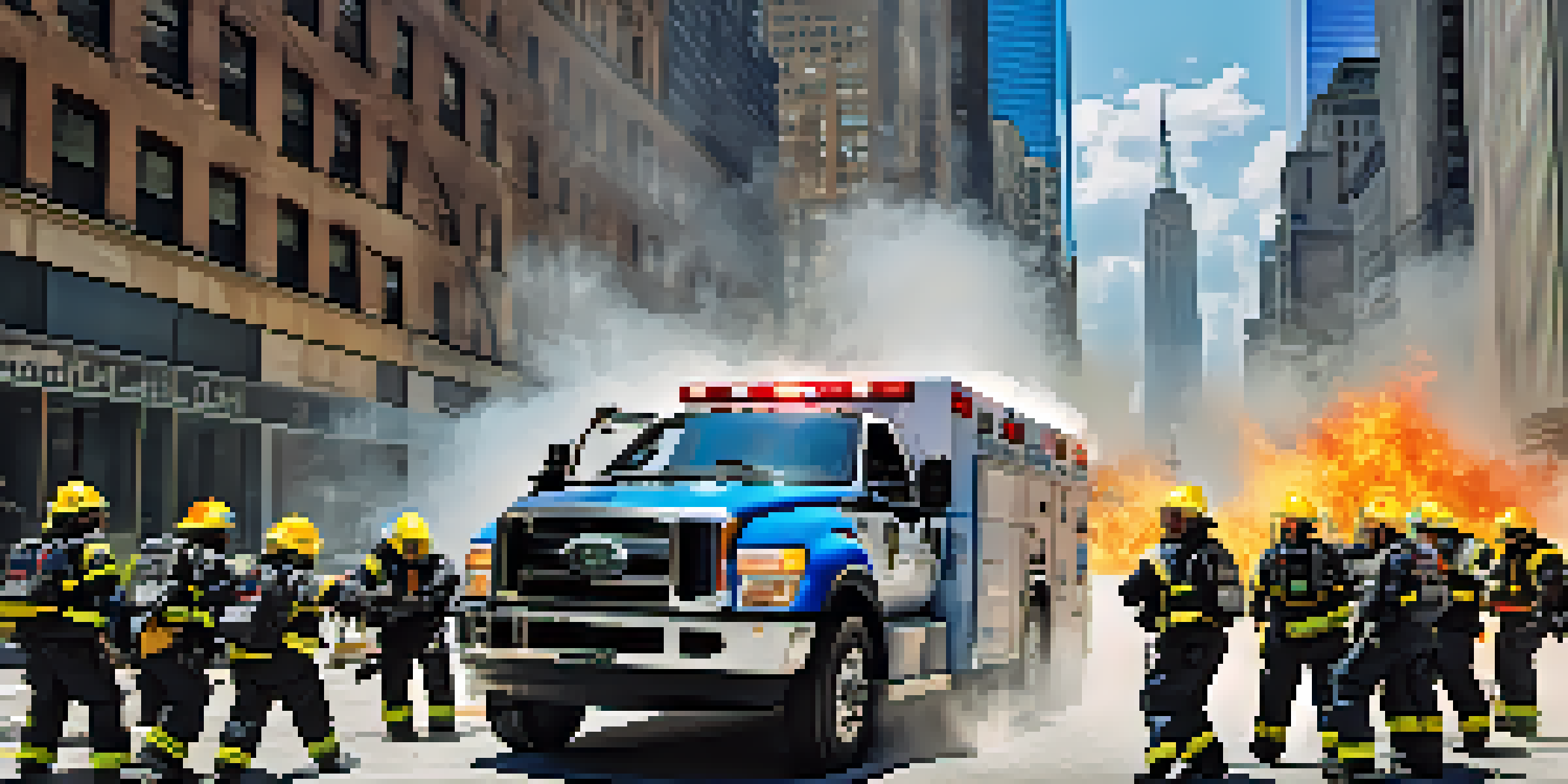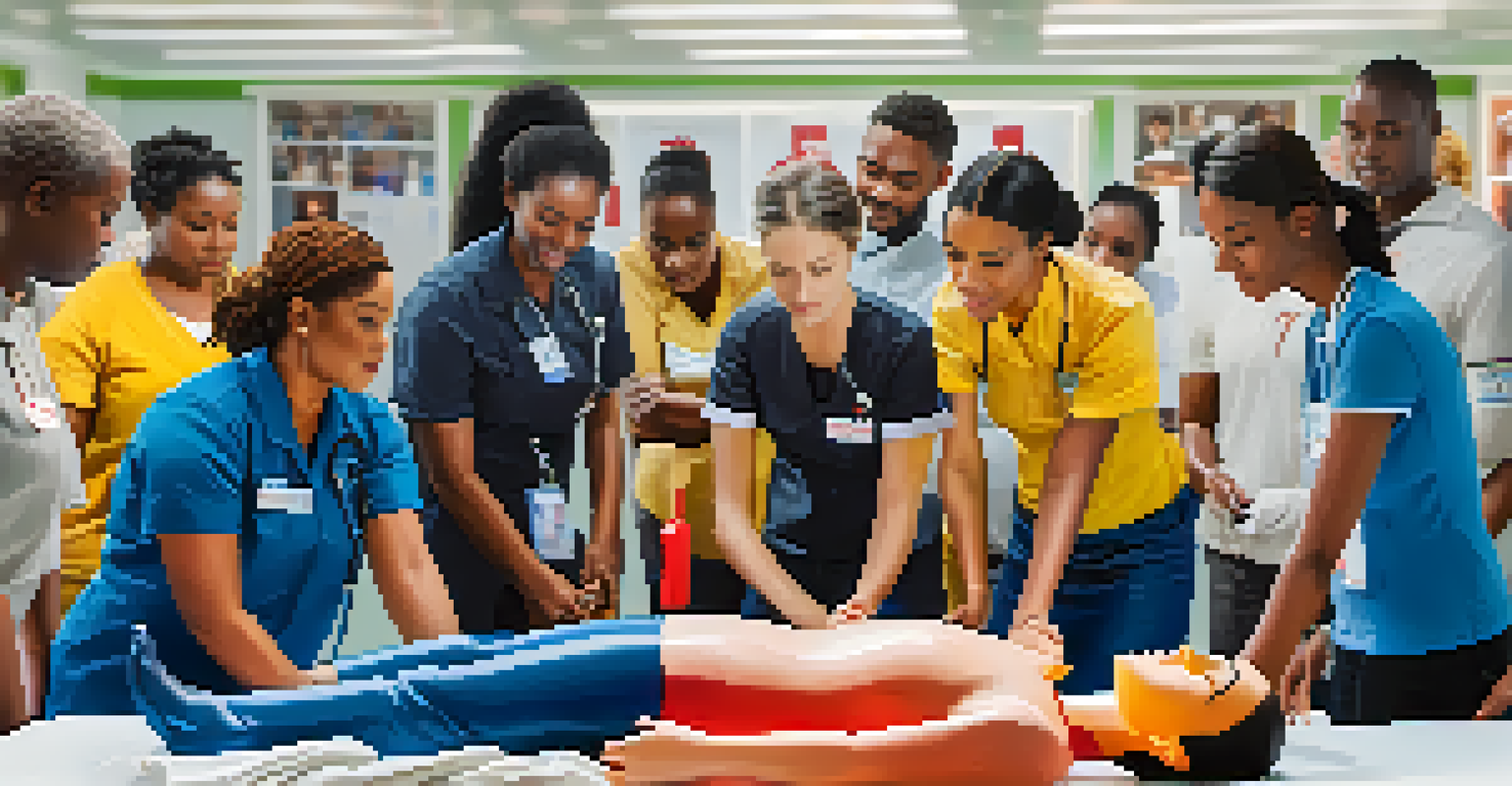Training and Preparedness for NYC's Crisis Response Teams

Understanding the Role of Crisis Response Teams in NYC
Crisis response teams in New York City play a vital role in managing emergencies, from natural disasters to public health crises. These dedicated professionals are trained to act swiftly, ensuring the safety and well-being of the community. Their responsibilities include assessing situations, coordinating with other agencies, and implementing effective response strategies. By understanding their function, we can appreciate the importance of robust training and preparedness programs.
In times of crisis, the best response is not just about acting quickly, but also about acting smartly and collaboratively.
The complexity of New York City’s landscape—from its dense population to its diverse neighborhoods—requires a unique approach to crisis management. Teams must not only be skilled in emergency response but also culturally competent to connect with various communities effectively. This multifaceted role demands continuous training and adaptation to evolving challenges.
In essence, NYC's crisis response teams are the frontline defenders in times of need, charged with protecting the city and its residents. Their effectiveness hinges on comprehensive training programs that prepare them for any scenario. As we delve deeper into their training and preparedness, we’ll uncover what makes these teams an invaluable asset to the city.
Key Components of Crisis Response Team Training
Training for crisis response teams encompasses various key components, beginning with foundational skills in emergency management. This includes learning about incident command systems, risk assessment, and communication protocols. These skills are crucial for ensuring that teams can respond effectively and coordinate with other agencies during a crisis.

In addition to technical skills, crisis response training also emphasizes mental resilience and emotional intelligence. Team members often face high-stress situations, and the ability to remain calm and empathetic can make a significant difference. Programs include stress management techniques and simulations that mirror real-life scenarios, allowing responders to practice their skills under pressure.
Crisis Teams Ensure Community Safety
Crisis response teams in NYC are essential for managing emergencies and ensuring the safety and well-being of residents.
Furthermore, ongoing training is essential for keeping teams updated on new technologies, protocols, and best practices. Regular drills and workshops foster a culture of continuous learning and improvement. By incorporating feedback from previous responses, teams can refine their strategies and enhance their overall effectiveness.
Importance of Interagency Collaboration in Training
Crisis situations often require collaboration among multiple agencies, making interagency training a crucial component for NYC's response teams. By working together during training exercises, teams from various departments can build relationships and learn each other’s procedures. This collaboration helps ensure seamless communication and coordination during actual emergencies.
The strength of the team is each individual member. The strength of each member is the team.
For instance, joint exercises with fire, police, and healthcare agencies allow responders to practice their roles in a controlled environment. These scenarios mimic the complexities of real crises, highlighting the need for teamwork and trust. Participants often gain a deeper understanding of each agency’s capabilities and limitations, which enhances their collective response.
Moreover, interagency training fosters a shared sense of purpose and mutual respect among responders. When teams understand each other's strengths, they can effectively leverage resources and expertise during a crisis. This collaborative spirit is essential for building a resilient response framework for the city.
Real-Life Scenarios: Learning through Simulation
Simulation training is a cornerstone of crisis response preparation, allowing teams to engage in realistic exercises that reflect potential emergencies. These simulations can range from natural disasters like hurricanes to man-made incidents such as terrorist attacks. By immersing responders in these scenarios, they can practice decision-making and teamwork in a high-pressure environment.
For example, a recent simulation involved a mock subway derailment, which required multiple agencies to coordinate their response efforts. Teams had to assess casualties, manage crowd control, and secure the area—all while communicating effectively with one another. This hands-on experience helps responders identify gaps in their knowledge and improve their reactions to real-life situations.
Training Enhances Response Effectiveness
Comprehensive training, including simulations and interagency collaboration, is crucial for crisis response teams to effectively handle emergencies.
The lessons learned from these simulations are invaluable; they not only highlight the importance of training but also foster a culture of preparedness. By regularly engaging in these practices, teams can adapt to new challenges, ensuring they are ready for anything that comes their way.
Community Involvement in Crisis Preparedness
Community involvement is a critical aspect of NYC's crisis preparedness strategy, as it fosters resilience and ensures that residents are equipped to handle emergencies. Programs that educate citizens about emergency procedures, such as evacuation routes and communication plans, empower individuals to take charge during crises. This grassroots approach helps build a network of informed citizens who can assist during emergencies.
Moreover, crisis response teams often host workshops and training sessions for community members. These initiatives not only enhance public awareness but also encourage collaboration between responders and residents. For example, training citizens in basic first aid and emergency response techniques can significantly improve outcomes during a crisis.
By integrating community involvement into preparedness efforts, NYC's crisis response teams can create a strong support system. Prepared citizens can act as force multipliers, assisting professional responders and helping to mitigate the impact of emergencies.
Mental Health Training: A Critical Component
Mental health training is an increasingly important element of crisis response team preparedness. Responders often encounter traumatic situations, and equipping them with tools to manage their mental health is essential for their well-being and effectiveness. Training programs now incorporate psychological first aid, stress management techniques, and resources for ongoing support.
Recognizing the signs of trauma in themselves and others allows responders to provide better care during crises. For instance, understanding how to approach individuals experiencing distress can help de-escalate potentially volatile situations. This knowledge not only aids in personal resilience but also enhances the overall response effort.
Community Support Strengthens Preparedness
Engaging the community in crisis preparedness fosters resilience and equips residents to assist during emergencies.
Additionally, fostering a culture that prioritizes mental health encourages open dialogue about these challenges. When team members feel supported, they are more likely to seek help when needed. This proactive approach ultimately leads to a healthier, more effective crisis response team.
Evaluating and Improving Crisis Response Training
Evaluating the effectiveness of crisis response training is crucial for continuous improvement. After each training exercise, teams gather feedback to assess what worked and what didn’t. This reflective practice helps identify areas for enhancement and ensures that training programs remain relevant to the ever-changing landscape of emergencies.
Moreover, incorporating lessons learned from real events into training curricula helps responders stay prepared for new challenges. For instance, after a major public health crisis, teams may integrate new protocols and practices into their training to address emerging threats. This adaptability is vital for maintaining a robust crisis response framework.

Ultimately, the goal of evaluation and improvement is to ensure that NYC's crisis response teams are always ready to serve the community. By fostering a culture of learning and adaptation, these teams can enhance their skills and effectively respond to any situation that arises.